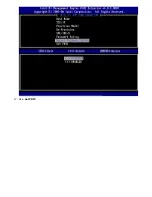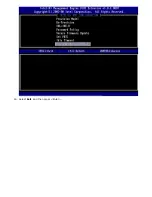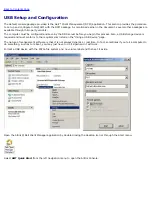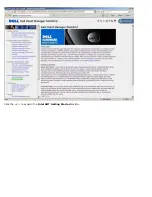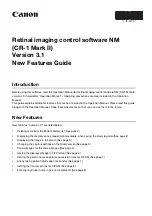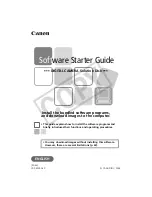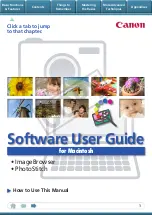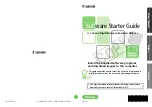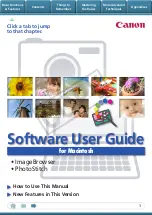
Back to Contents Page
Intel AMT WebGUI
The Intel® AMT WebGUI is a Web browser-based interface for limited remote computer management. The WebGUI is often
used as a test to determine if Intel AMT setup and configuration was performed properly on a computer. A successful remote
connection between a remote computer and the host computer running the WebGUI indicates proper Intel AMT setup and
configuration on the remote computer.
The Intel AMT WebGUI is accessible from any Web browser, such as the Internet Explorer® or Netscape® applications.
Limited remote computer management includes:
Hardware inventory
Event logging
Remote computer reset
Changing of network settings
Addition of new users
WebGUI support is enabled by default for SMB setup and configured computers. WebGUI support for Enterprise setup and
configured computers is determined by the setup and configuration server. Information on using the WebGUI interface is
available on the
Intel AMT website
.
An older version of the WebGUI interface is available at
Intel AMT Small Business Administrator's Guide
under
Using the Web
Browser Interface
on page 4.
Follow the steps below to connect to the Intel AMT WebGUI on a computer that has been configured and set up :
1. Turn on an Intel AMT capable computer that has completed Intel AMT setup and configuration.
2. Launch a Web browser from a separate computer, such as a management computer on the same subnet as the Intel
AMT computer.
3. Connect to the IP address specified in the MEBx and port of the Intel AMT capable computer. (example:
http://ip_address:16992
or
http://192.168.2.1:16992
)
By default, the port is 16992. Use port 16993 and https:// to connect to the Intel AMT WebGUI on a computer
that has been configured and set up in the Enterprise mode.
If DHCP is used, then use the fully qualified domain name (FQDN) for the ME. The FQDN is the combination of
the host name and domain. (example:
http://host_name:16992
or
http://system1:16992
)
The management computer makes a TCP connection to the Intel AMT capable computer and accesses the top level
Intel AMT-embedded Web page within the Management Engine of the Intel AMT capable computer.
Type the username and password. The default username is
admin
and the password is what was set during Intel AMT
setup in the MEBx. Review the computer information and make any necessary changes. You can change the MEBx
password for the remote computer in the WebGUI. Changing the password in the WebGUI or a remote console results
in two passwords. The new password, known as the remote MEBx password, only works remotely with the WebGUI or
remote console. The local MEBx password used to locally access the MEBx is not changed. You have to remember both
the local and remote MEBx passwords to access the computer MEBx locally and remotely. When the MEBx password is
initially set in Intel AMT setup, the password serves as both the local and remote password. If the remote password is
changed, then the passwords are out of sync. Select
Exit
.
Back to Contents Page
Summary of Contents for Active Management Technology v4.0
Page 37: ...9 Select Intel ME Features Control and then press Enter ...
Page 39: ...10 Select Return to Previous Menu and then press Enter ...
Page 40: ...11 Select Intel ME Power Control and then press Enter ...
Page 41: ...Intel ME ON in Host Sleep States is the next option The default setting is Mobile ON in S0 ...
Page 42: ...12 Select Return to Previous Menu and then press Enter ...
Page 43: ...13 Select Return to Previous Menu and then press Enter ...
Page 47: ...8 Type the domain name into the Domain name field ...
Page 49: ...11 Select Setup and Configuration from the menu and then press Enter ...
Page 52: ...14 Select Provisioning Server from the menu and then press Enter ...
Page 55: ...17 Select TLS PSK from the menu and then press Enter ...
Page 58: ...20 Select TLS PKI from the menu and then press Enter ...
Page 60: ...22 If Enabled refer to steps 19 through 21 If not Enabled skip to step 22 ...
Page 64: ...27 Select Return to Previous Menu and press Enter ...
Page 67: ...29 Select SOL IDE R and then press Enter ...
Page 70: ...32 For Serial Over LAN SOL IDE R select Enabled and then press Enter ...
Page 71: ...33 For IDE Redirection select Enabled and then press Enter ...
Page 72: ...Secure Firmware Update is the next option The default setting is Enabled ...
Page 73: ...Skip Set PRTC ...
Page 75: ...34 Select Return to Previous Menu and then press Enter ...
Page 76: ...35 Select Exit and then press Enter ...
Page 77: ...36 Press y when the following message appears Are you sure you want to exit Y N ...
Page 84: ...10 Select Intel ME Features Control and then press Enter ...
Page 86: ...11 Select Return to Previous Menu and then press Enter ...
Page 87: ...12 Select Intel ME Power Control and then press Enter ...
Page 88: ...Intel ME ON in Host Sleep States is the next option The default setting is Mobile ON in S0 ...
Page 89: ...13 Select Return to Previous Menu and then press Enter ...
Page 90: ...14 Select Return to Previous Menu and then press Enter ...
Page 94: ...8 Type the domain name into the field ...
Page 99: ...15 For Serial Over LAN select Enabled and then press Enter ...
Page 100: ...16 For IDE Redirection select Enabled and then press Enter ...
Page 101: ...Secure Firmware Update is the next option The default setting is Enabled ...
Page 102: ...17 Skip Set PRTC ...
Page 104: ...18 Select Return to Previous Menu and then press Enter ...
Page 105: ...19 Select Exit and then press Enter ...
Page 106: ...20 Press y when the following message appears Are you sure you want to exit Y N ...
Page 115: ...Click the to expand the Intel AMT Getting Started section ...
Page 116: ...Click the to expand the Section 1 Provisioning section ...
Page 117: ...Click the to expand the Basic Provisioning without TLS section ...
Page 120: ...The IP address for the ProvisionServer and Intel SCS are now visible ...
Page 121: ...Select Step 2 Discovery Capabilities ...
Page 123: ...Select Step 3 View Intel AMT Capable Computers ...
Page 124: ...Any Intel AMT capable computers on the network are visible in this list ...
Page 125: ...Select Step 4 Create Profile ...
Page 126: ...Click the plus symbol to add a new profile ...
Page 130: ...Select the icon with the arrow pointing out to Export Security Keys to USB Key ...
Page 131: ...Select the Generate keys before export radio button ...
Page 138: ...Select Step 7 Monitor Provisioning Process ...
Page 140: ...Select Step 8 Monitor Profile Assignments ...
Page 143: ...Back to Contents Page ...







